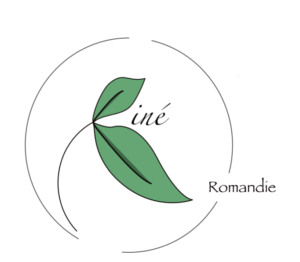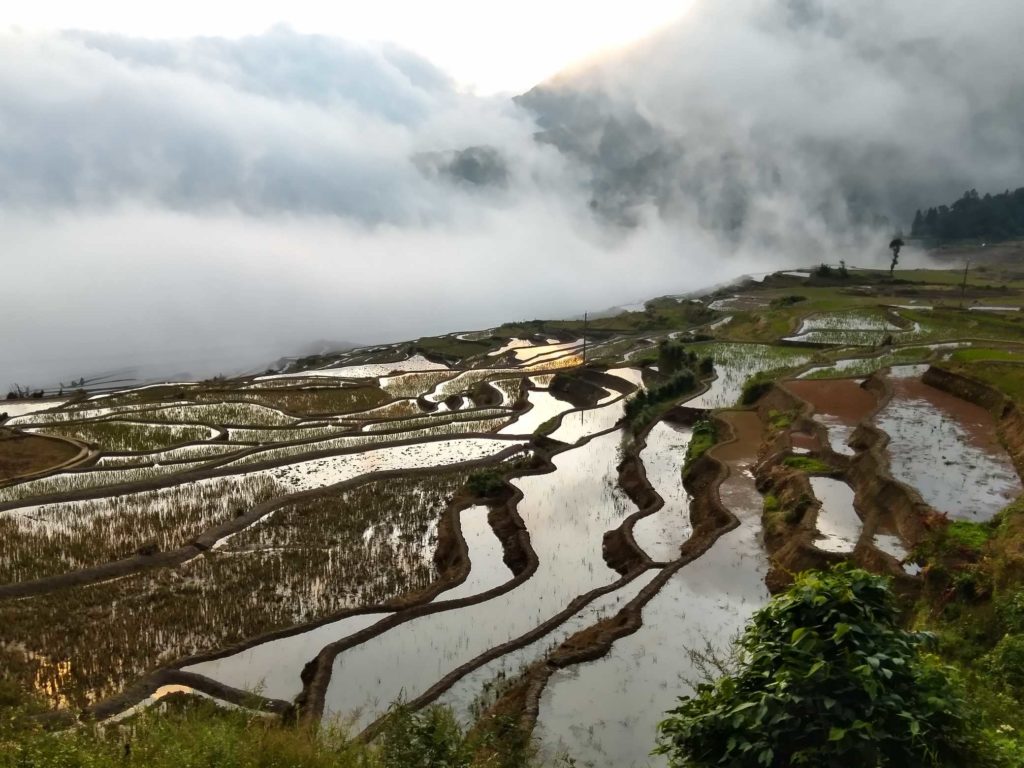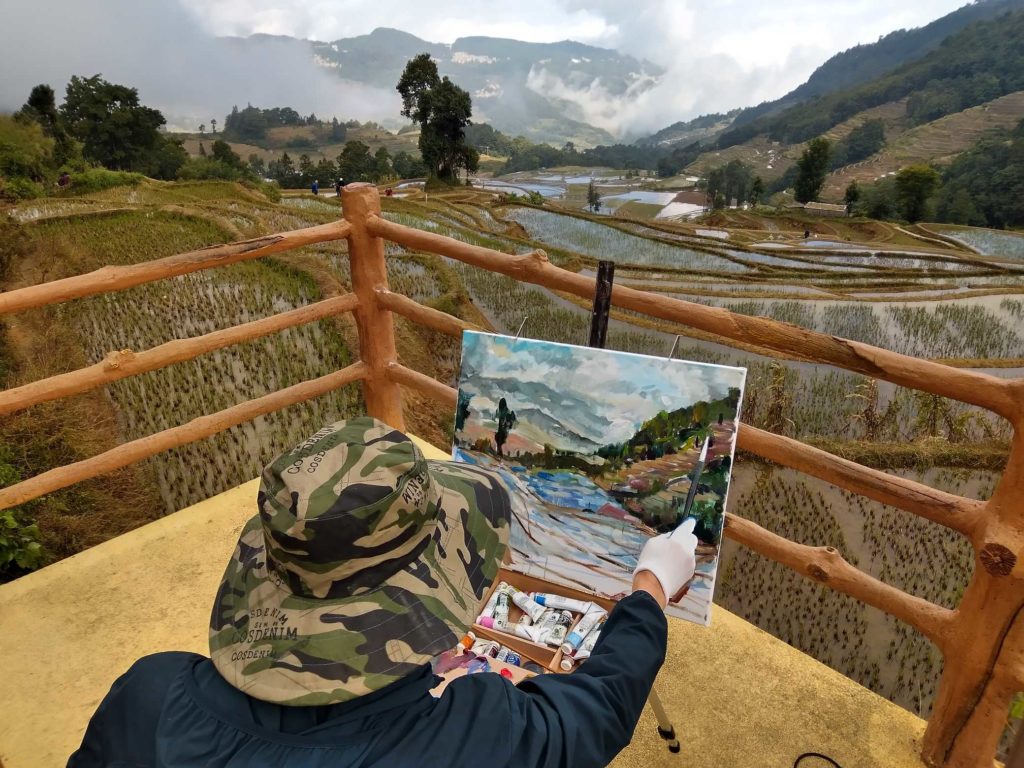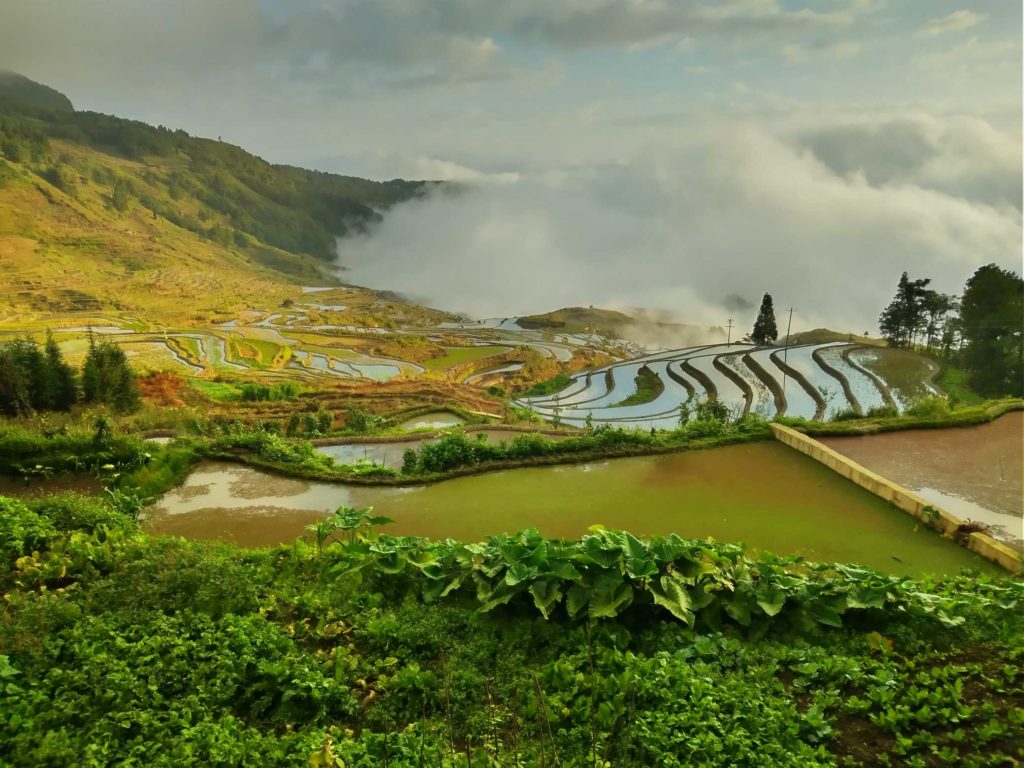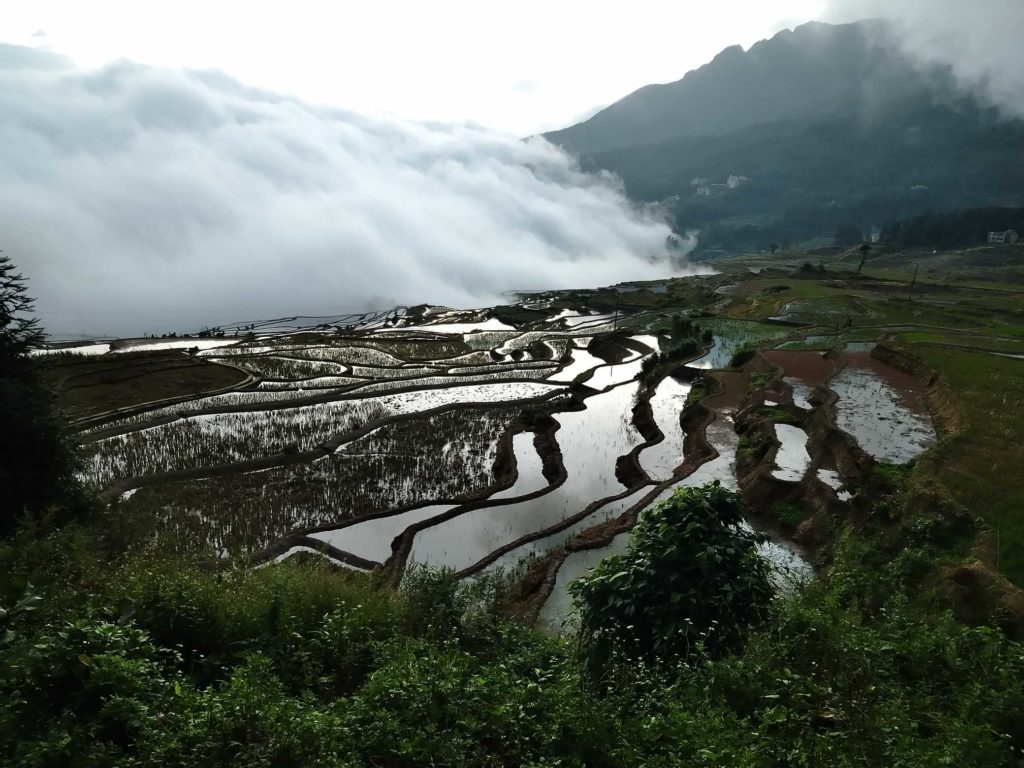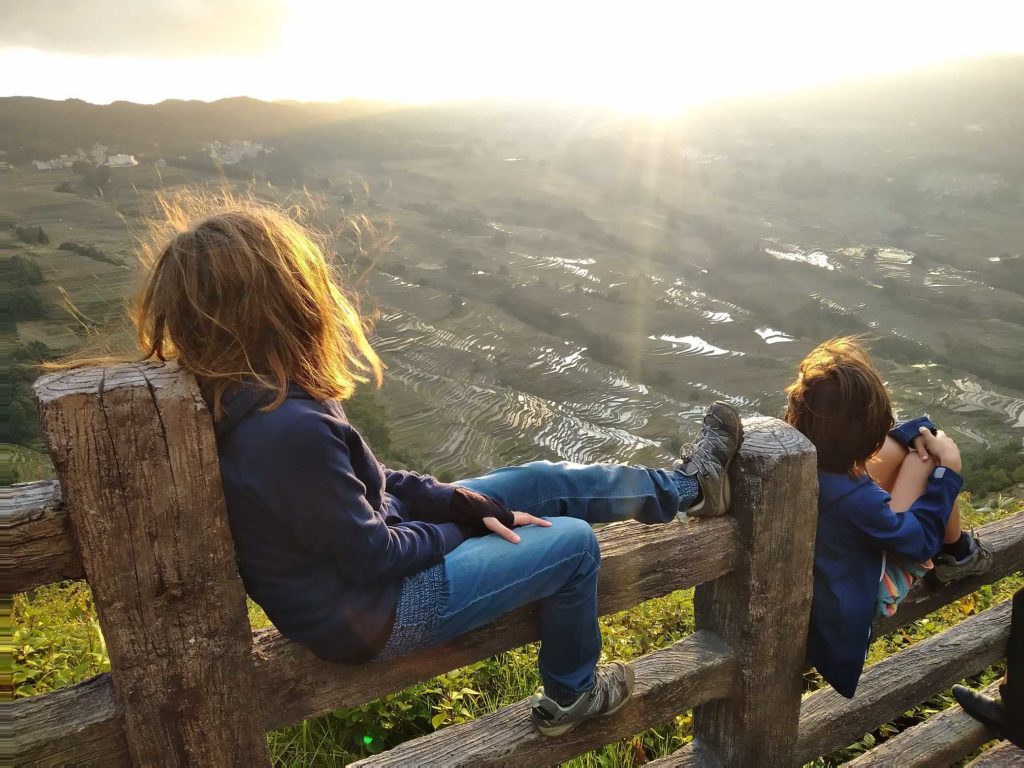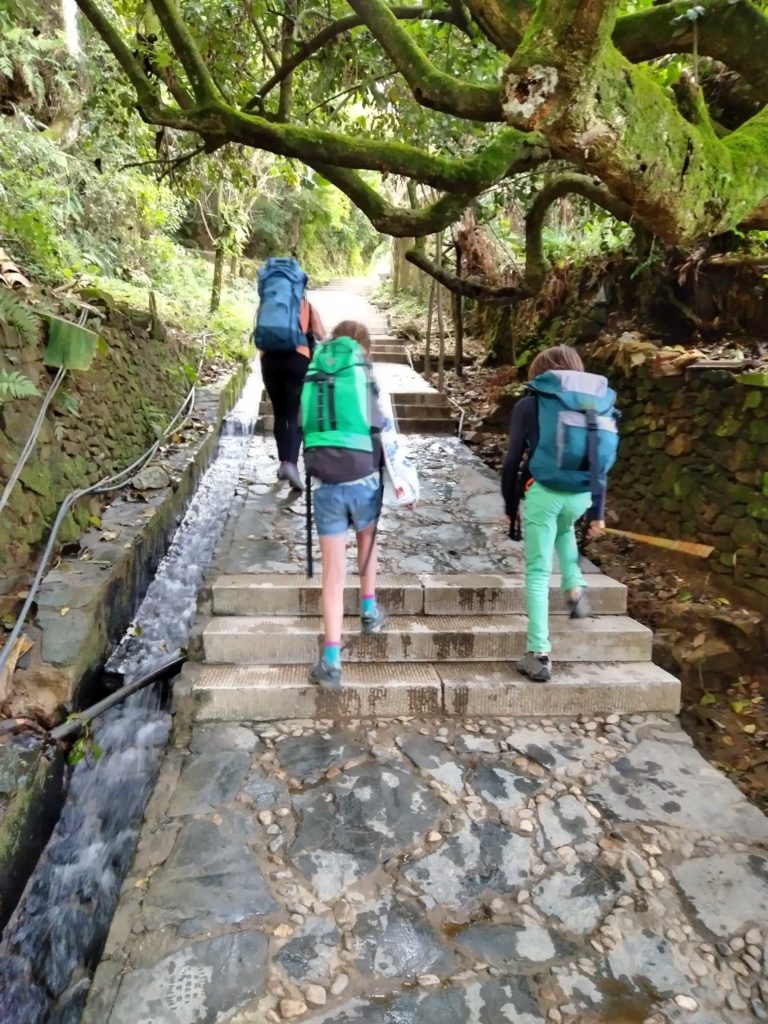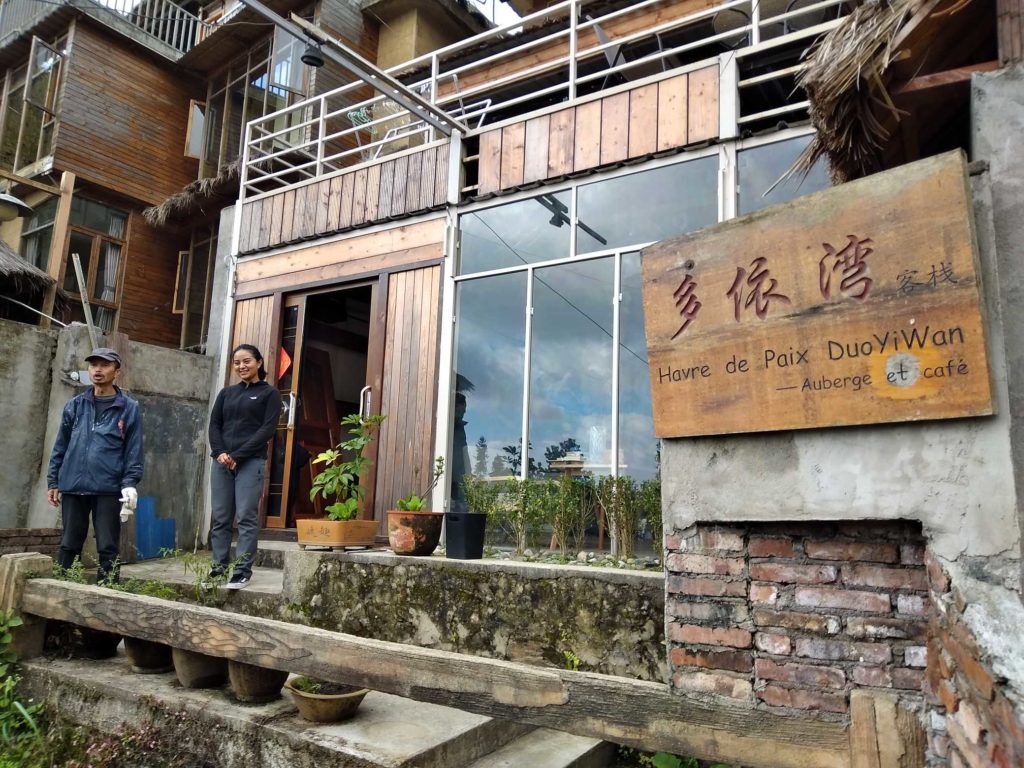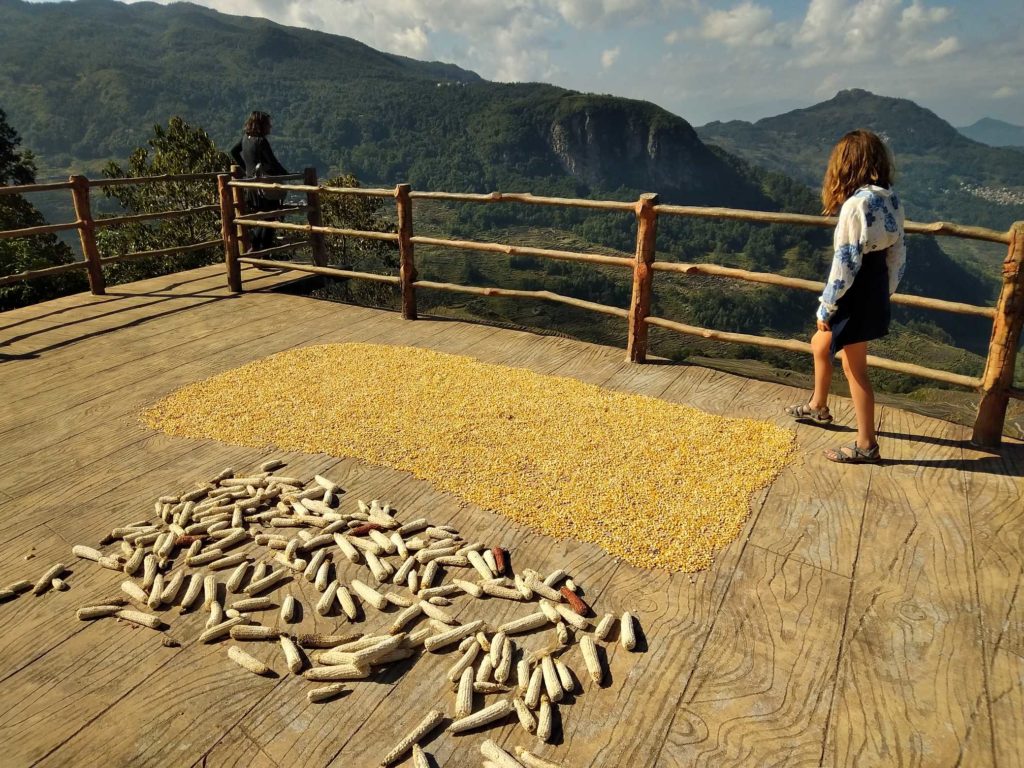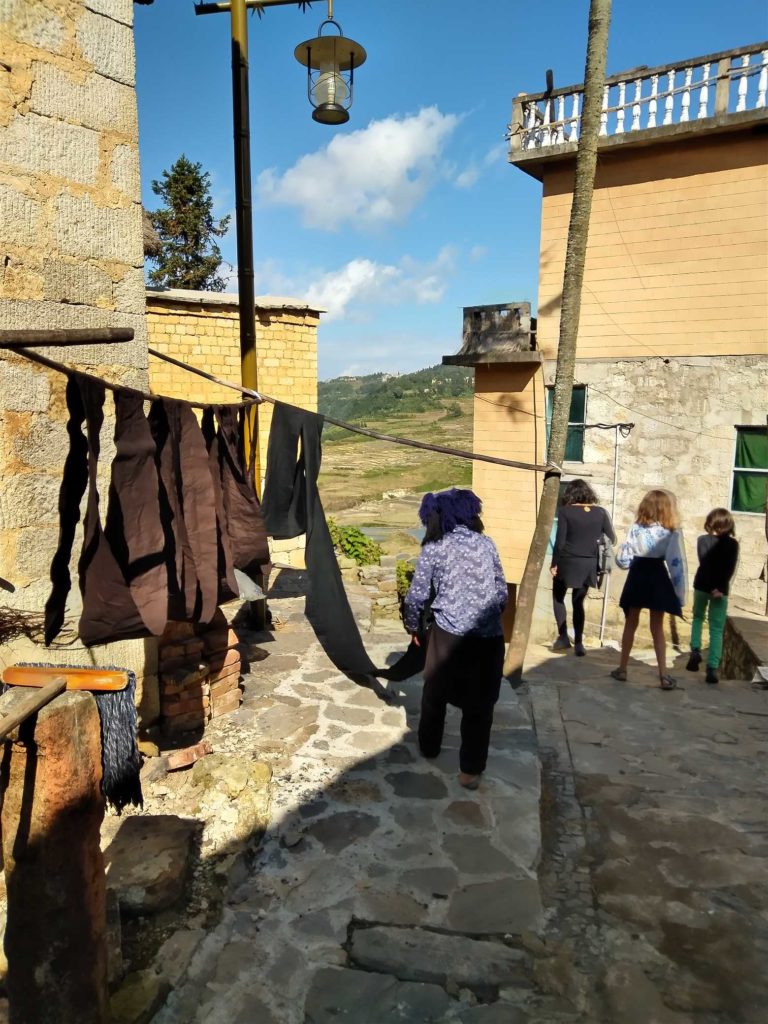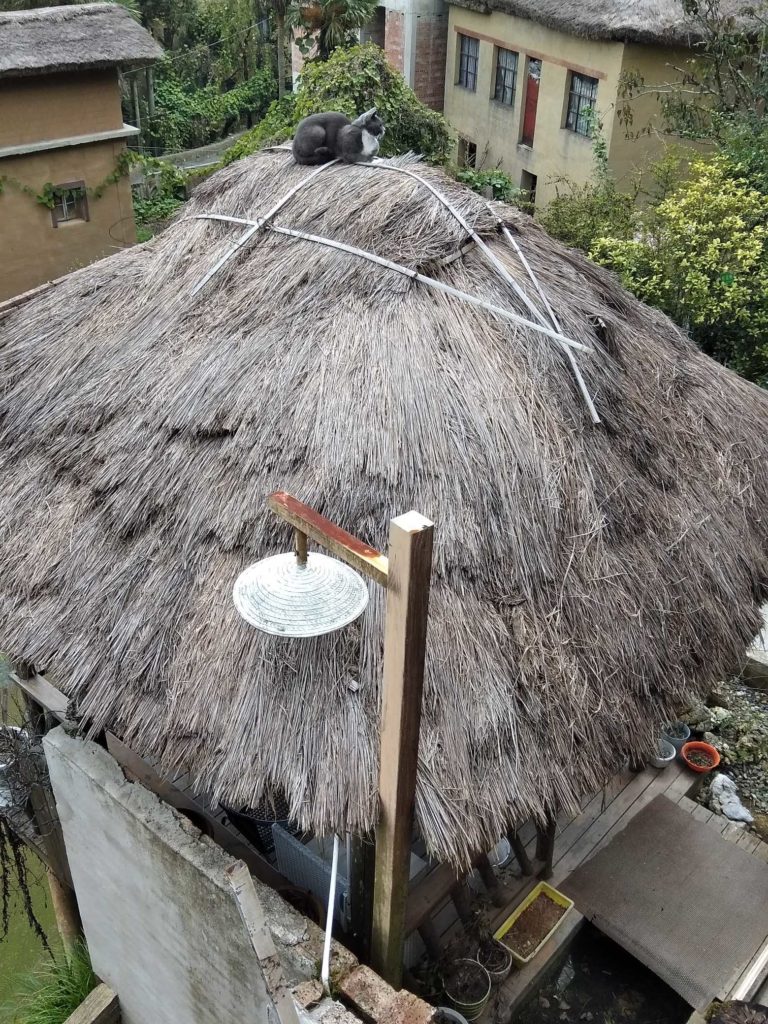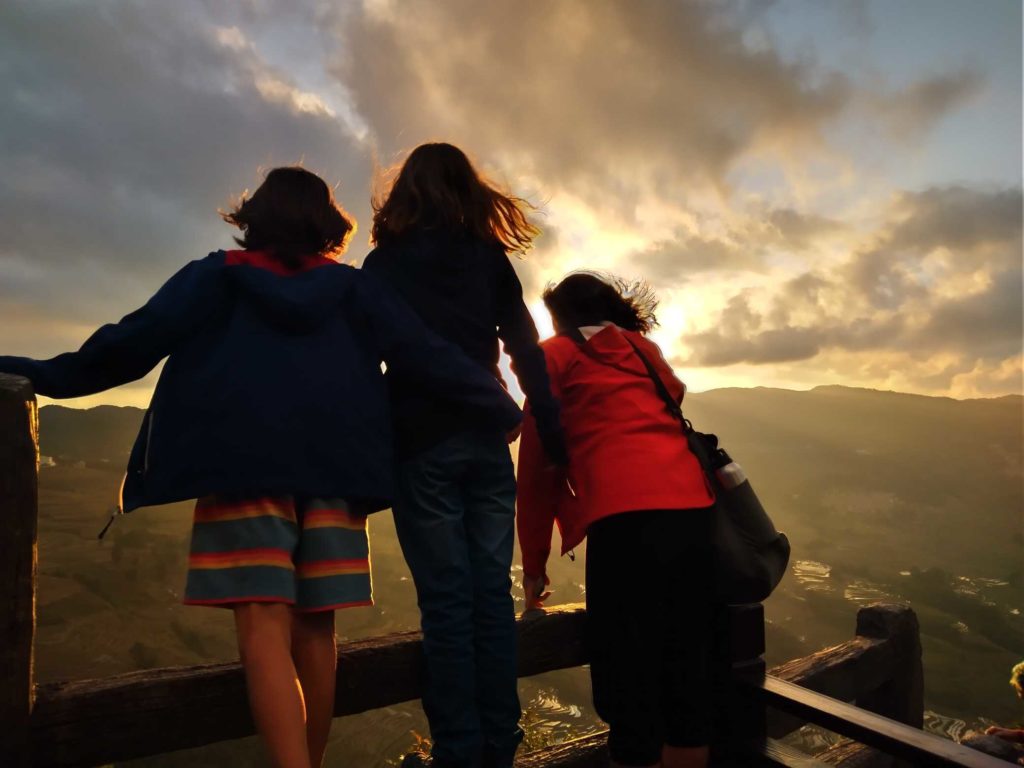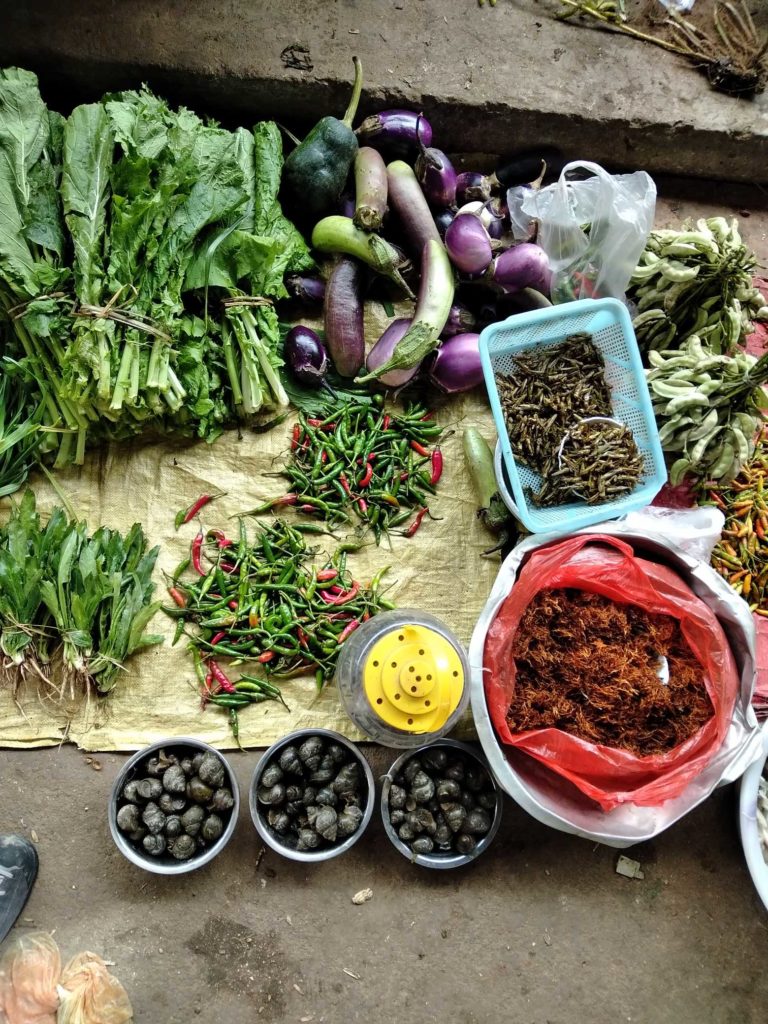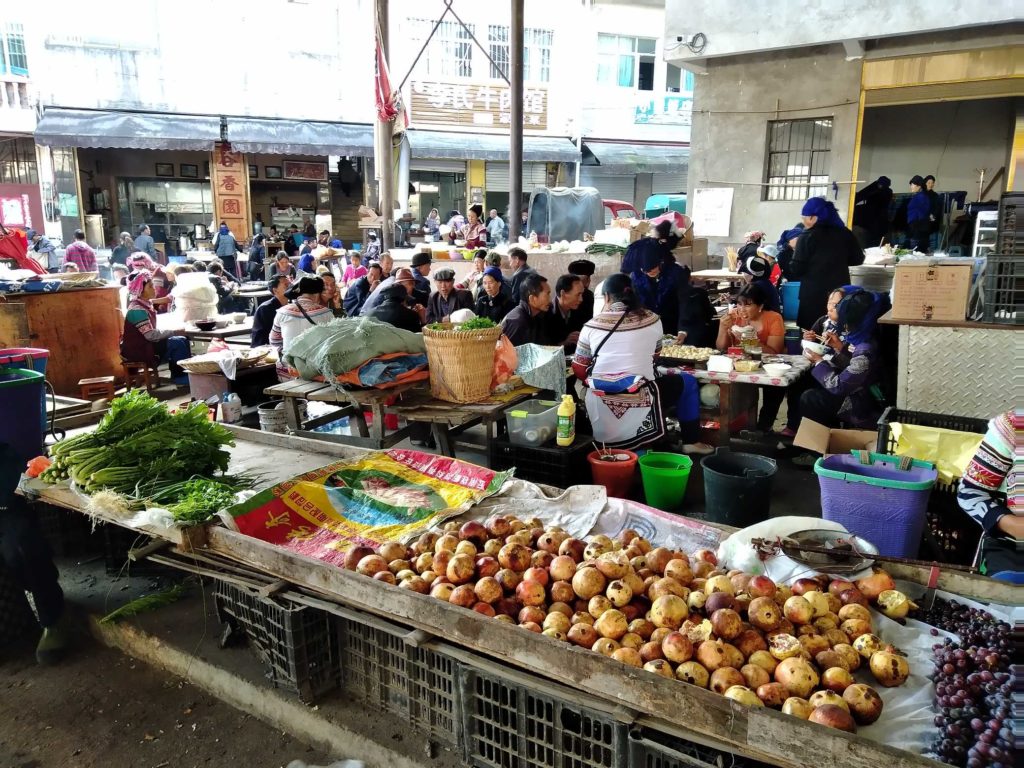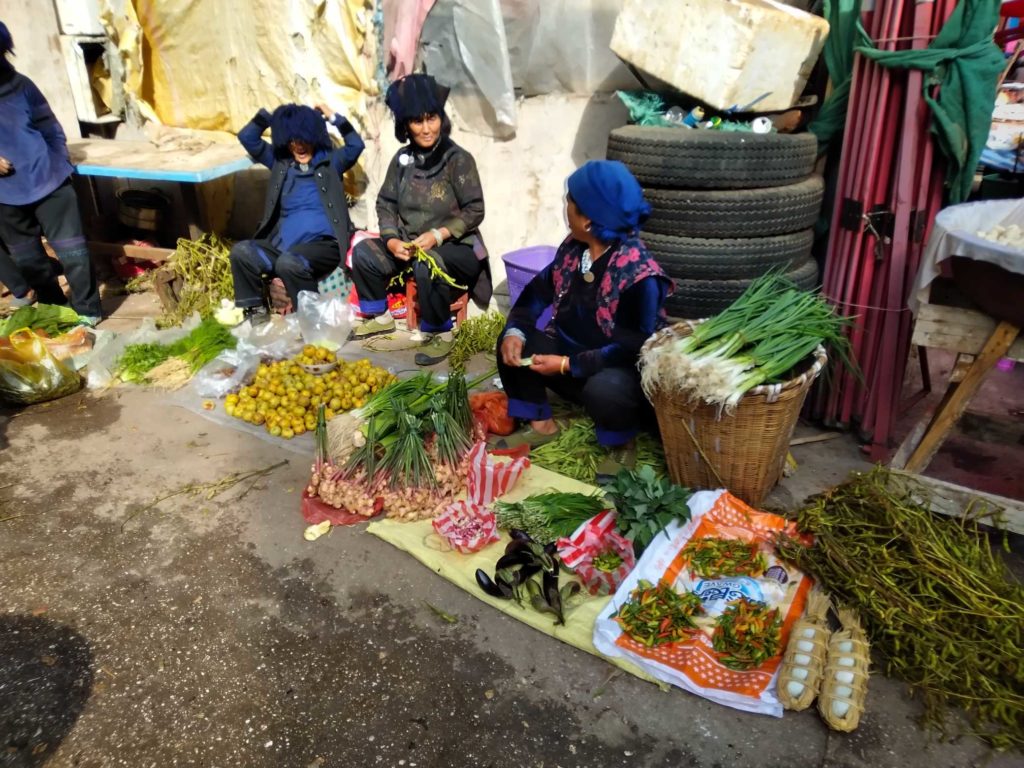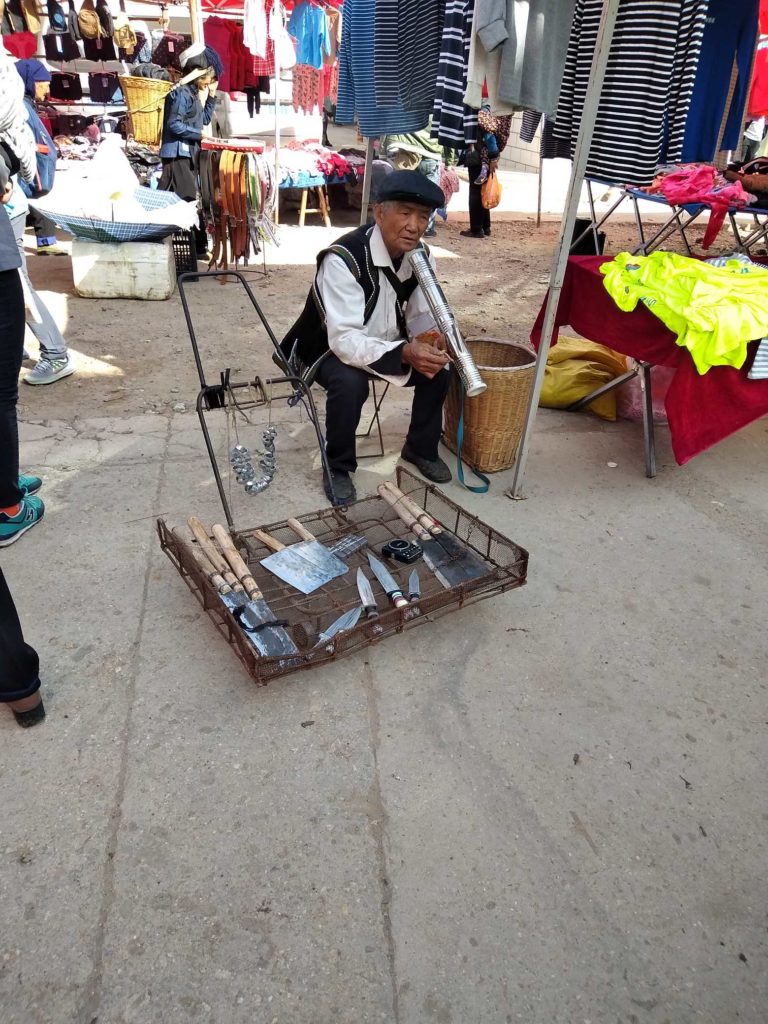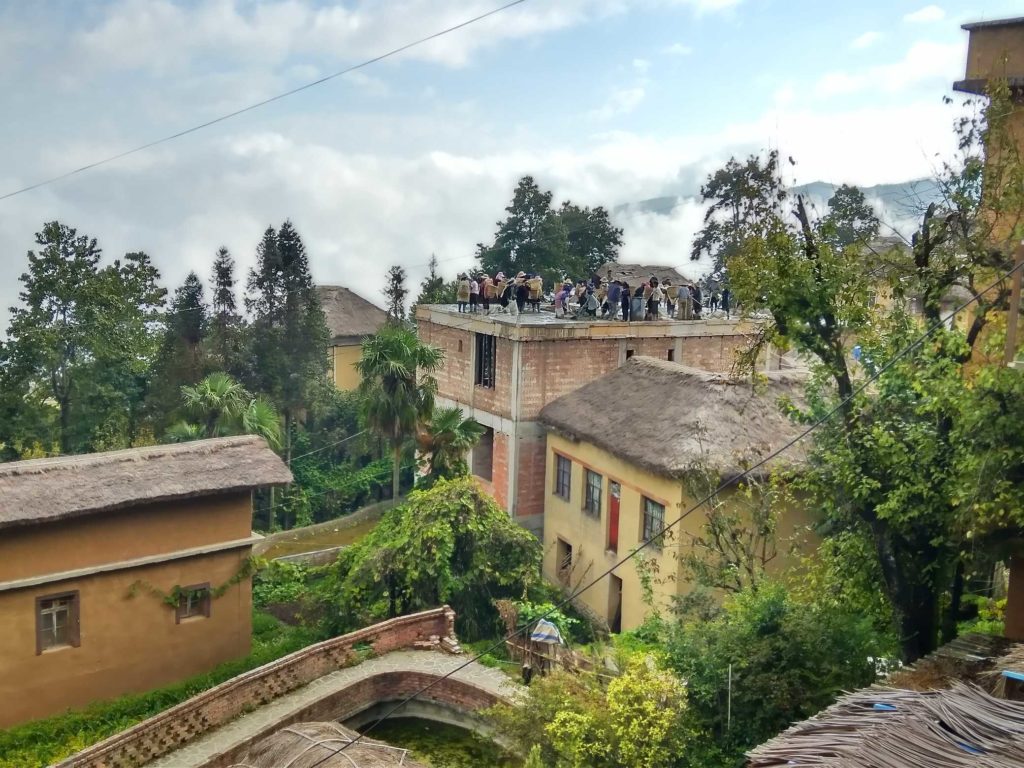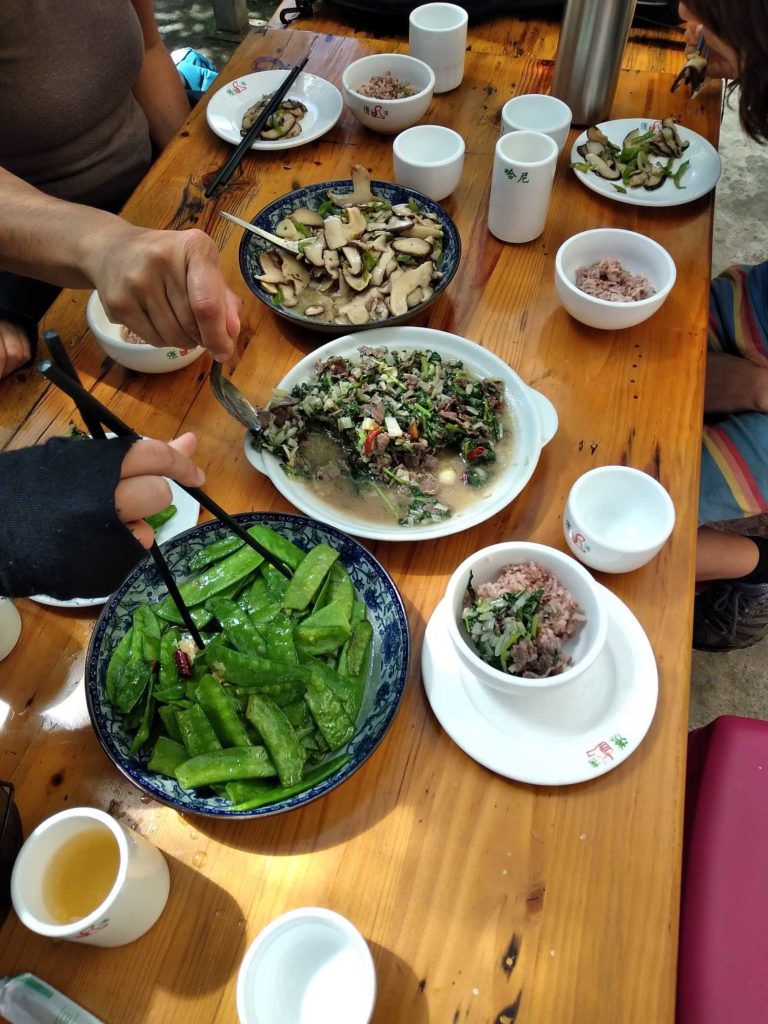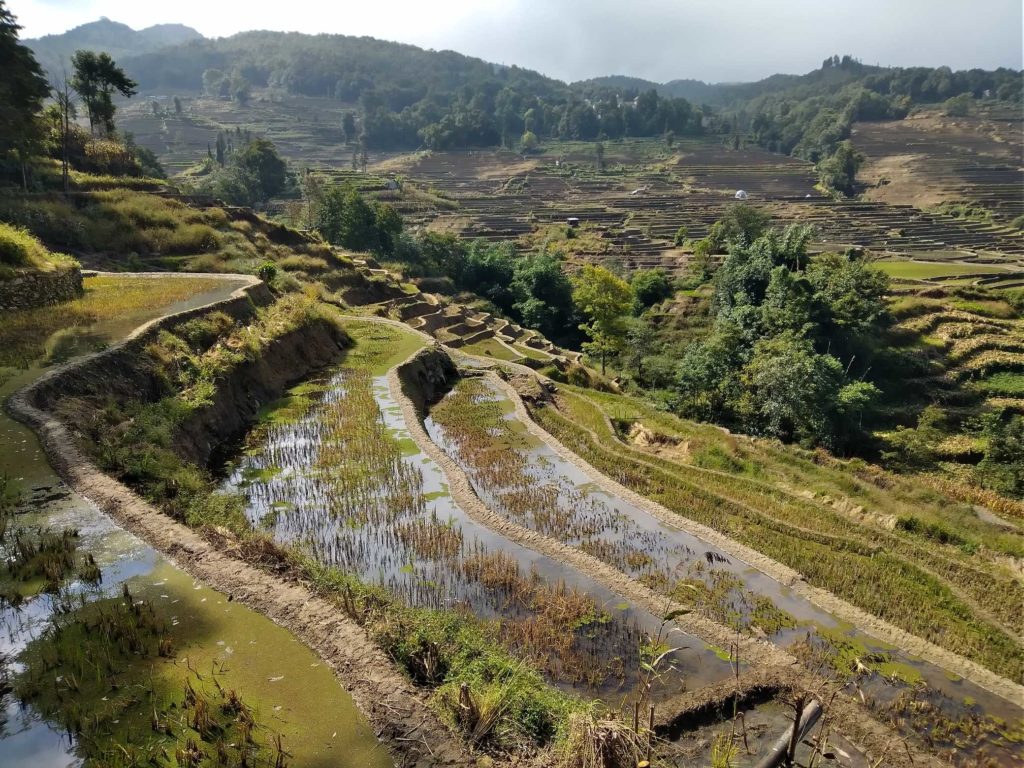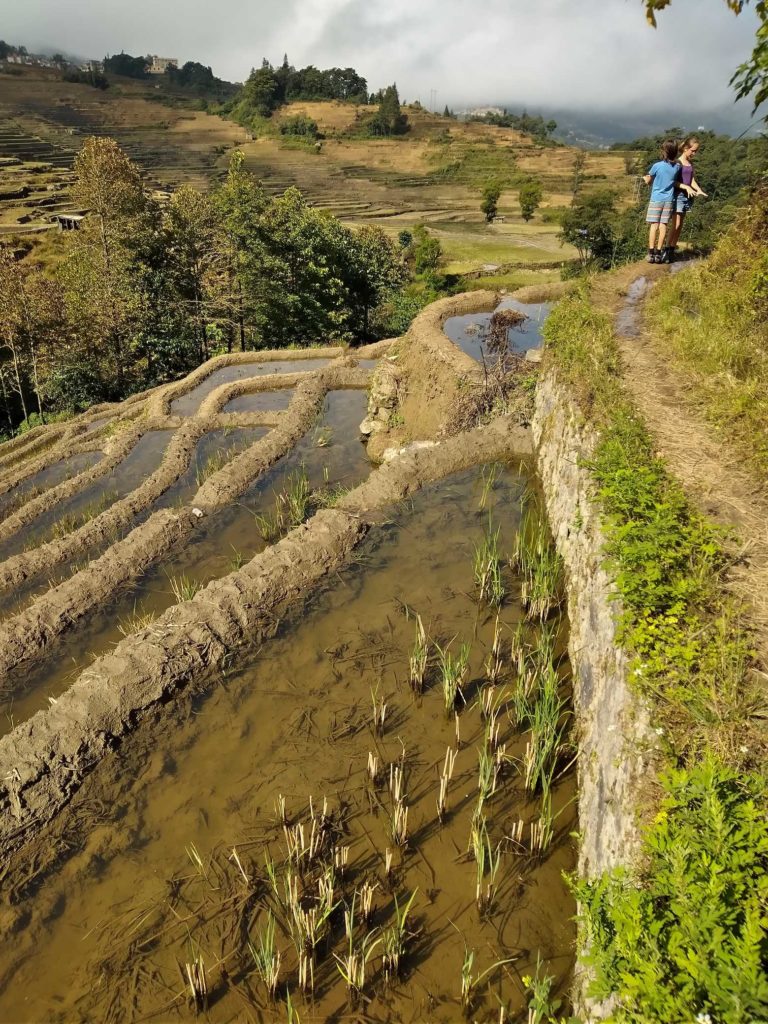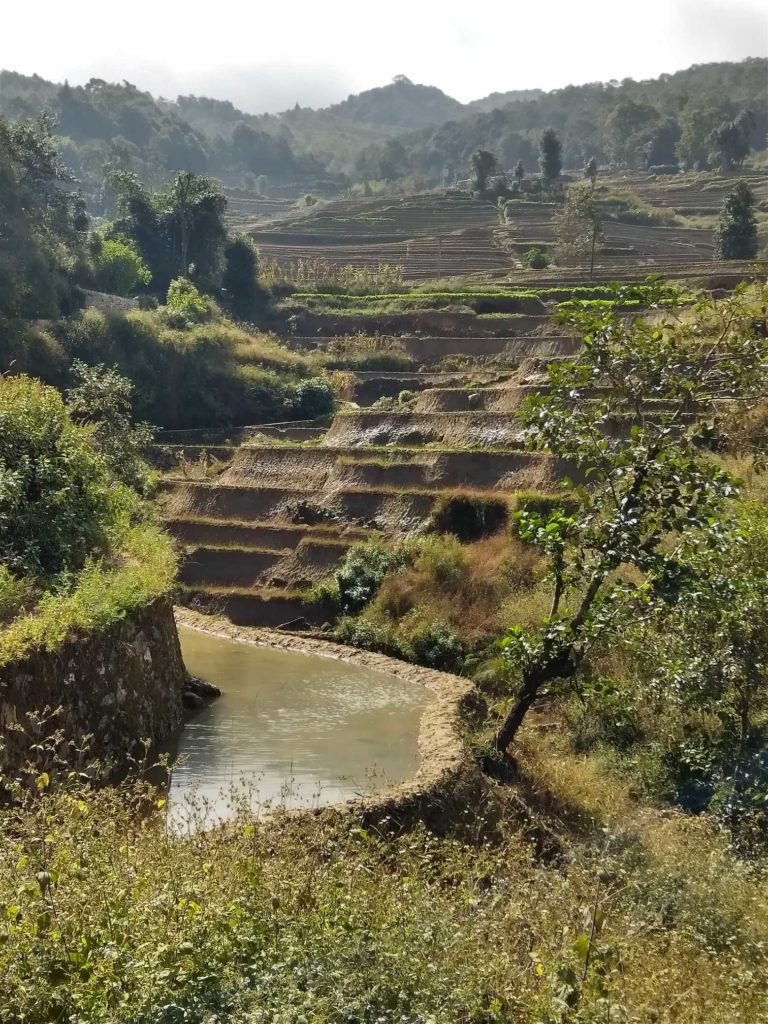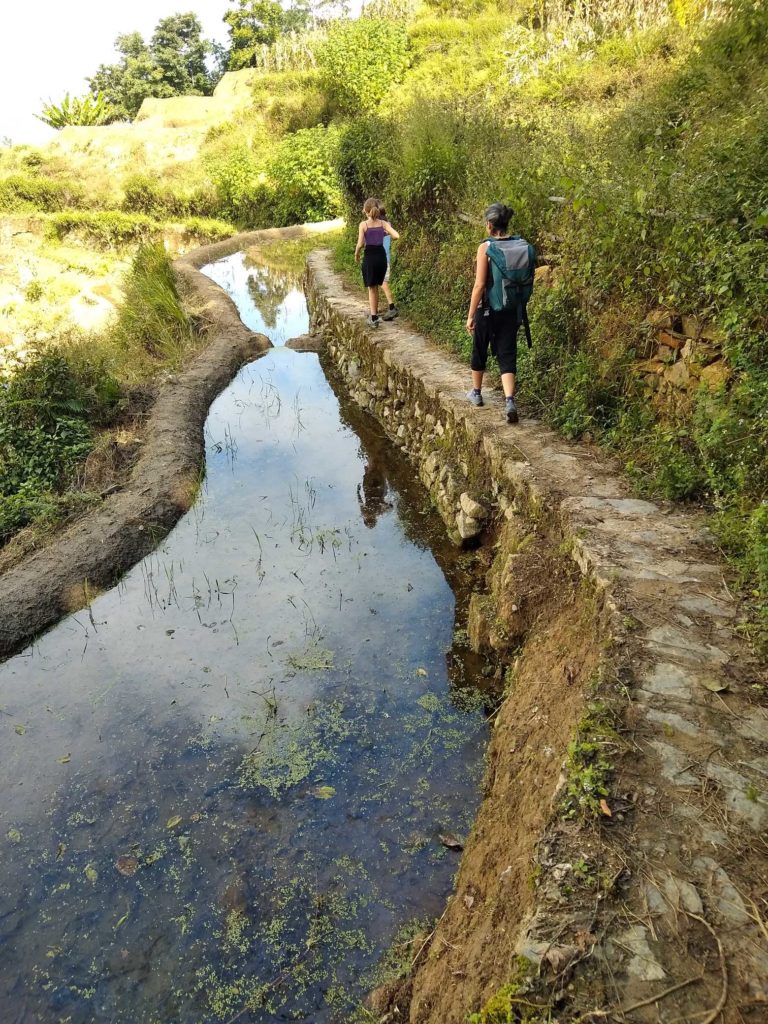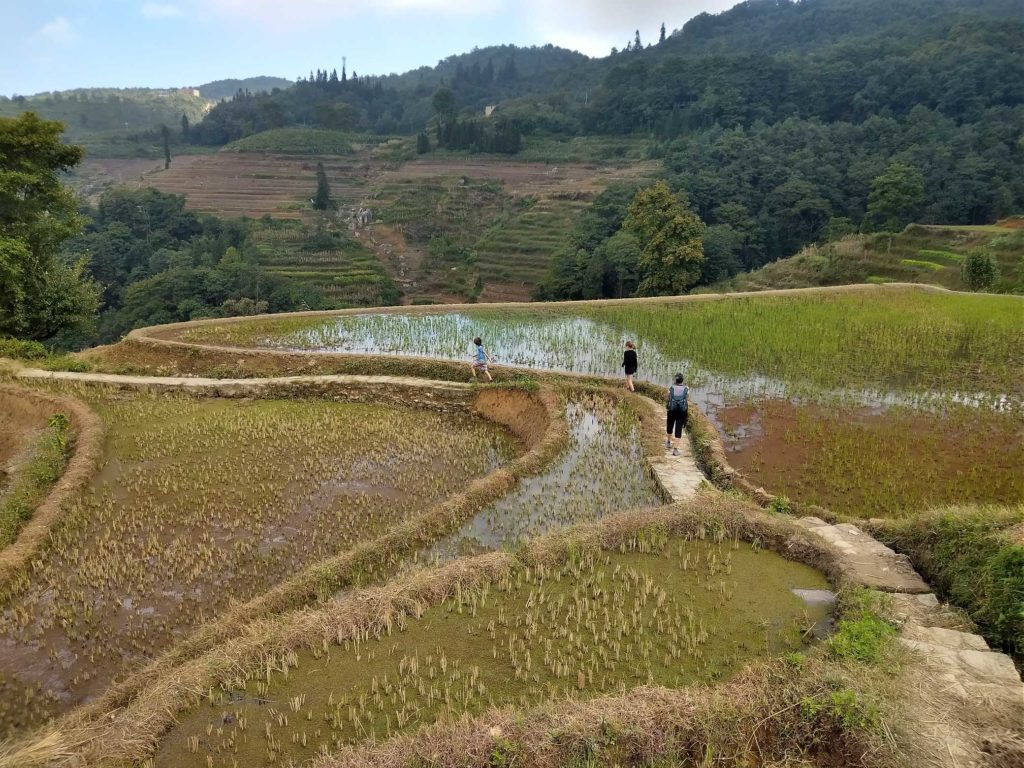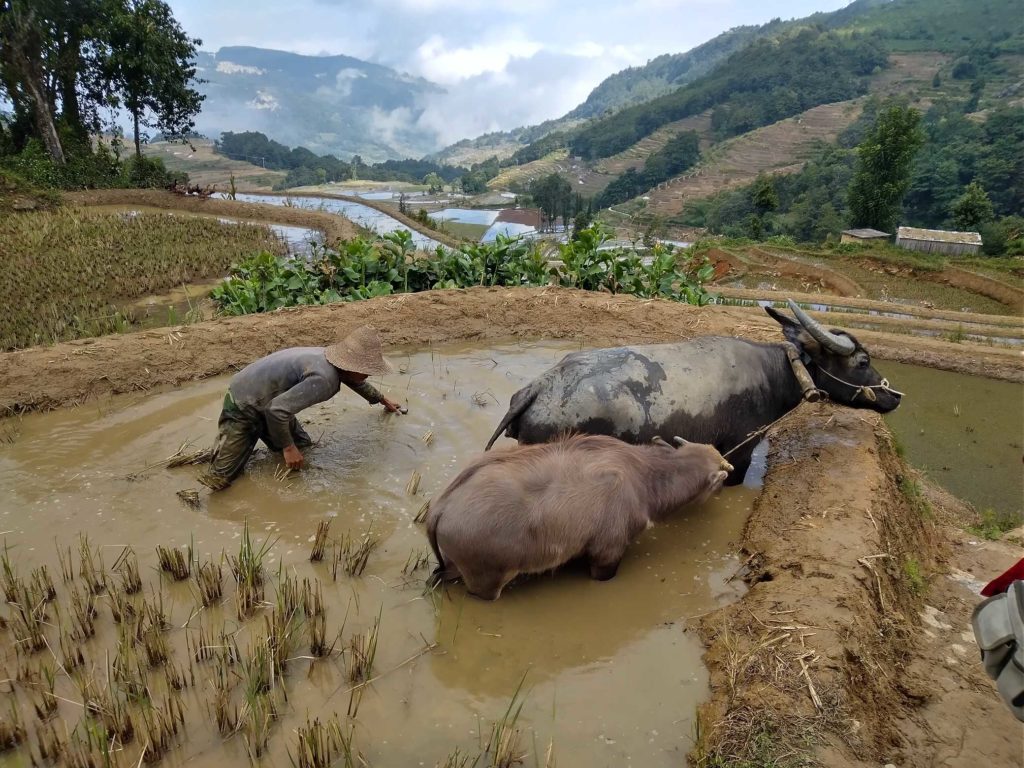Yuanyang – packing it in
Blogging is back! After a short break it is slightly strange to think back to the rice terraces of Yuanyang. Not only because we have done a lot since then but also because although we only stayed for 2 days / 3 nights but it was packed with sights and sounds and seems longer.
We arrived after our first proper bus journey: 3-4 hours in a small coach and then a minivan to the village. After wandering up and down the village for a while we found the guesthouse – a Havre de Paix with a french speaking owner and his english speaking wife. We were greeted with tea and urged to relax on the balcony or the roof terrace and enjoy the view. Nice to be in a small family guesthouse, even if we also enjoy the bustle of hostels.
That evening, keen to enjoy the clear weather (and warned that the weather can change quickly), we organised to go and see the rice paddies from the sun-set viewing point. Although the scale of the view was impressive (a whole mountainside as far as we can make out) the spectacle was a bit of an anti-climax, perhaps because the paddies were not all flooded at this tome of year and because it is such a photograped view. Still we amused ourselves until the sun set.
Next morning we peered out at 6-something to see if it was clear. Yes, groan, up for the sun-rise version. This time a short walk in the village rather than a short drive. A bit more like it. The reflection of the light on the paddies is constantly changing with the shifting clouds above and below us; and the only other tourist is our new friend Katrina. A young guy from the village records a time lapse of the « mer de nuage » and changing colours while older ladies carry baskets of ducks past us and down to paddies to pass the day.
After a relaxed breakfast we plot a hike through the paddies. We catch a collective mini-van to a view point where a group of Chinese tourists paint the paddies and set off on a well signposted train. The path descends from the level of the villages near the top of the hill, down into the valley through terraced rice paddies, and then climbs through more wooded landscape to a village and look-out. After an excellent lunch, where we chance upon Katarina coming in the opposite direciton, we decide to prolong the walk to the main village of the area. The afternoon is less picturesque but takes us through three villages. We finish the day hot, exhausted but happy, and relish a tea on the balcony and a delicious home-cooked dinner in the guesthouse.
The next day is market day in the main village so we jump in a collective minivan for the short trip to town. There we find a mass of people and the usual sights and sounds of a market, usual but still stimulating and interesting. Poultry for sale, masses of fruit and veg, locals doing the weekly shop (including the gang from the guesthouse and others from our village where most of the guesthouses are for now), locals eating and catching up with friends and gossip, older men smoking water pipes and one guy puffing away and selling knives.
In the afternoon we head for a nearby village with traditional « mushroom houses ». We skipped lunch so the walking up and down the village turns into something of a lesson on fasting. At the bottom of the village is a newly constructued lookout where an old couple seem to live and they make the most of the flat surface to dry their corn and the lady was spinning rope. The village is in the midst of renovation, and we later learn the government has allocated millions to it as uit was the poorest of the valley. Again the target is richer Chinese tourists and the renovations in that spirit. As if to prove the point we stumble on a tiny cafe in impeccable taste, if it were not for the view on the rise paddies we might mistake the stone walls, natural colours and fabrics, arty feel and potted plants for somewhere chic in the south of France rather than rural Yunnan. At the top of the village a fancy new hotel has the best view – in a year or two this village will be booming too.
And that’s it. two days packed full of sights and experiences to mirror the use of space by the local villagers using every availale space for rice or ducks or corn or something! A very long day travelling by bus to Jinghong awaits.
P.S. Construction tip – materials are dumped at the top of the village near the road and are then carried down through the village to where they are needed by the women of the village – we didnt see one male porter. The roof of the building next to ours was being finished off and seemed to involve half the village dumping stuff, raking, watering scraping and goodness knows what else. In a day it was done.
